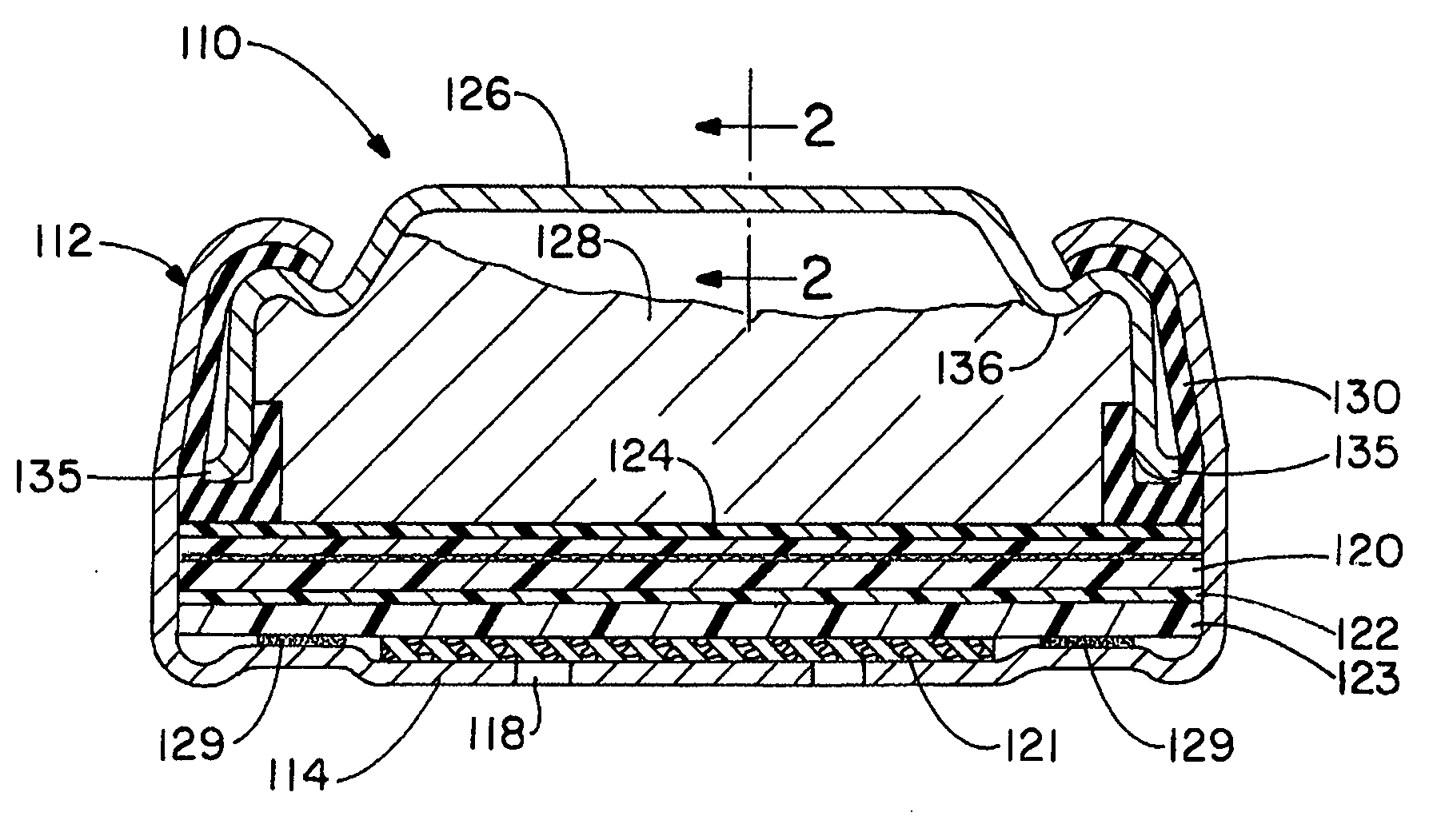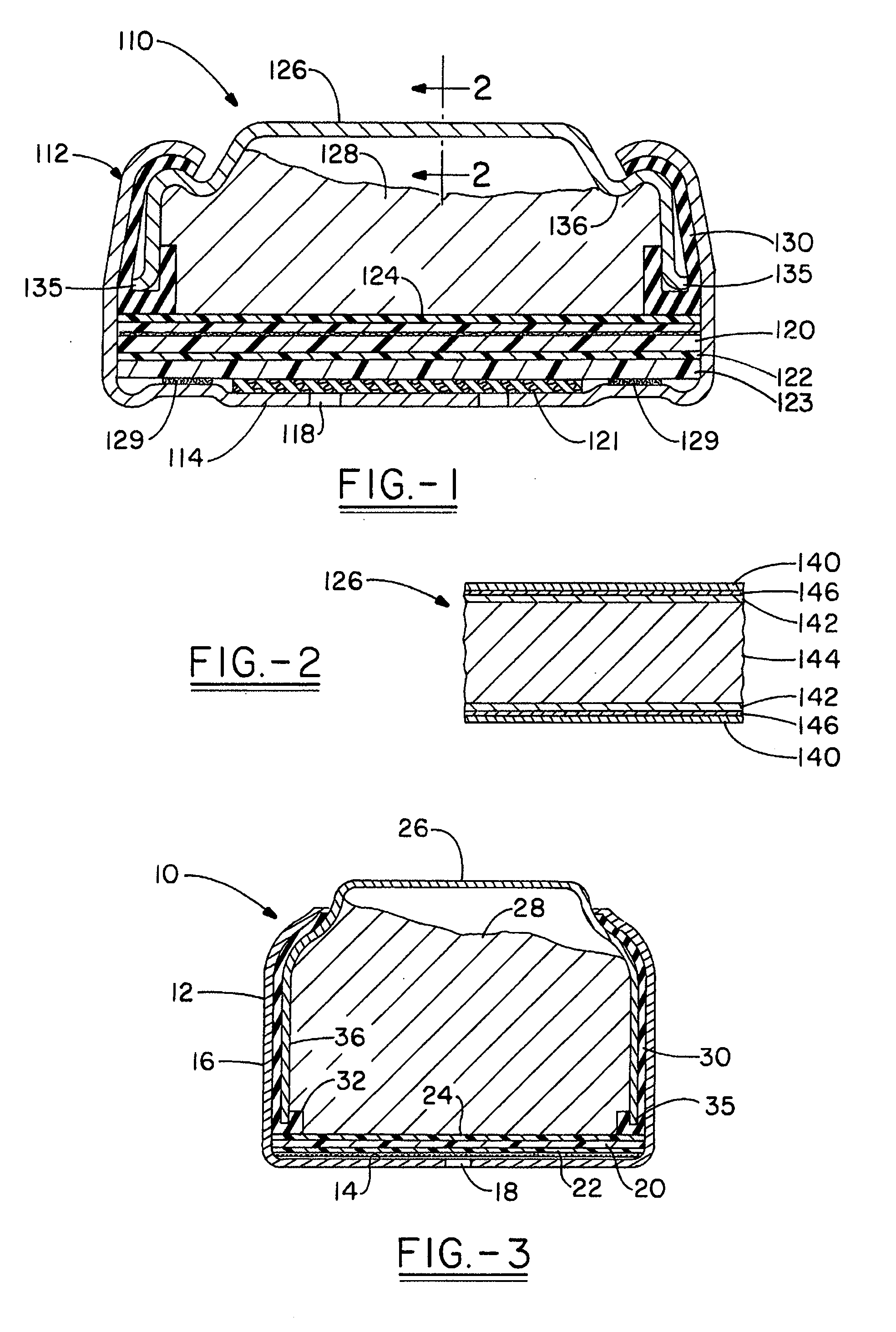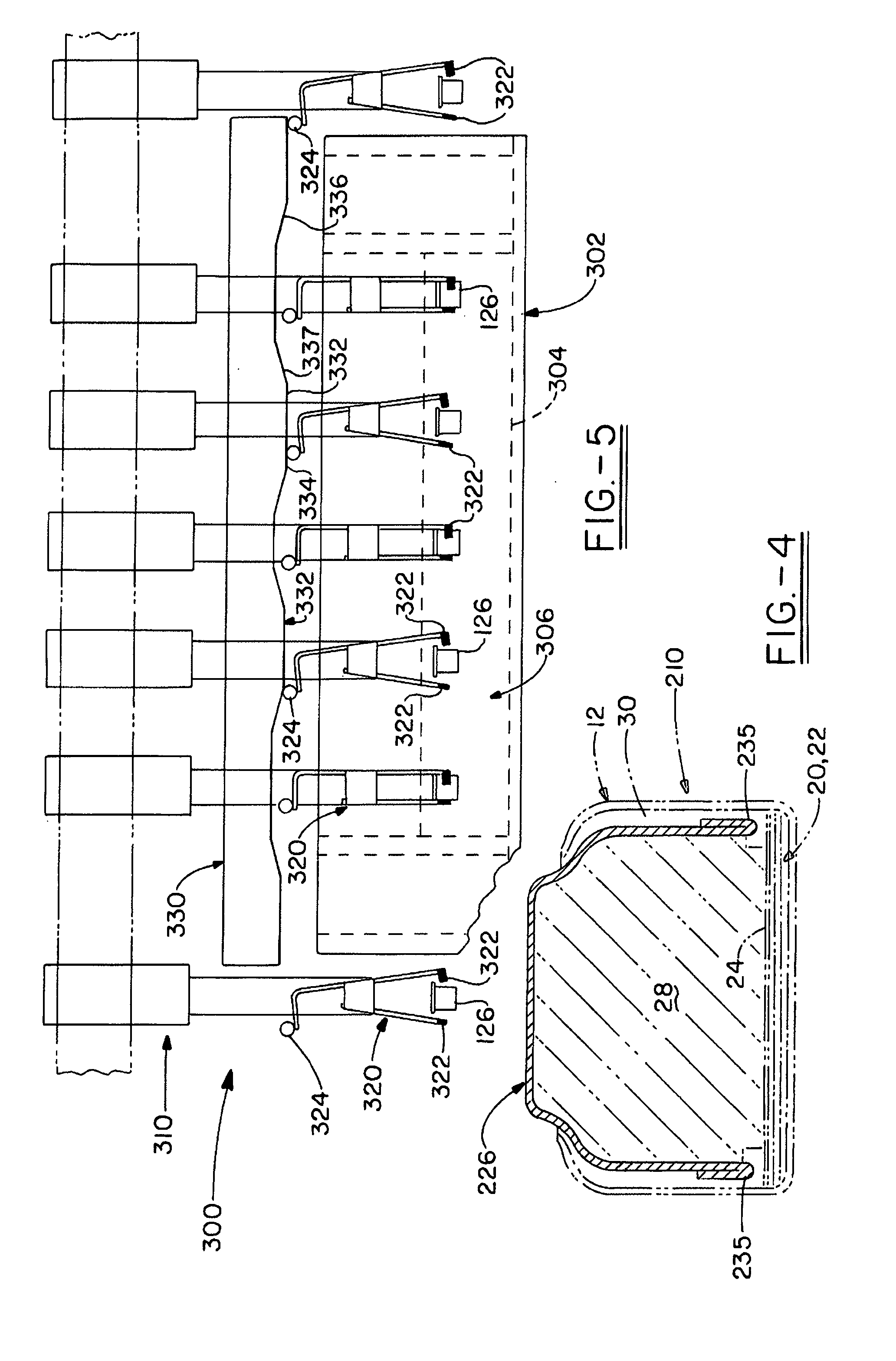Tin-plated anode casings for alkaline cells
an anode casing and alkaline cell technology, applied in the field of anode casings, can solve the problems of cell leakage, damaged cell sealing components, electrolyte accumulation therein, etc., and achieve the effect of increasing gassing and high hydrogen-overvoltage metal
- Summary
- Abstract
- Description
- Claims
- Application Information
AI Technical Summary
Benefits of technology
Problems solved by technology
Method used
Image
Examples
example 1
[0098] A number of plating processes were evaluated to identify those that might be suitable for plating prismatic cell anode casings. The anode casings were similar in shape to that shown in FIG. 1. They were made from steel strip, plated with nickel on both sides, and the outside dimensions of the formed casings were approximately 44.6×25.6×3.1 mm (length×width×height). The plating processes evaluated were: [0099] 1. Barrel—plating done inside of a perforated barrel, with rotation of the barrel to provide agitation of the parts and even plating. [0100] 2. Barrel with wrist action—a type of barrel plating in which the barrel is also moved in other, non-rotational motions in order to modify the agitation of the parts in the barrel. [0101] 3. Oscillating barrel—a type of barrel plating in which a cylindrical barrel is rotated about an axis that is offset from the longitudinal axis of symmetry such that the barrel is tilted from one side to the other as it rotates (e.g., Oscillating P...
example 2
[0114] Rack plating with variable contact was evaluated with a number of tin plating chemistries, all available from Technic, Inc. (see Table 2). All were plated to about 100 Amp-minutes at the current density shown in Table 2; where a current density range is listed, at least the low and high limits of the range were evaluated.
[0115] The TECHNISOLDER™ chemistries contained lead, while the TECHNISTAN™, ROPLATE® and CERAMISTAN™ chemistries did not. The TECHNISTAN™ JB 3000 chemistry used differed slightly in the ratio of components from the standard JB 3000 chemistry. The JB 3000 chemistry contained TECHNISTAN™ Acid solution (100 ml per liter), TECHNISTAN™ Tin Concentrate solution (164 ml per liter), TECHNISTAN™ JB 3000 Makeup solution (40 ml per liter), TECHNISTAN™ JB 3000 Brightener solution (10 ml per liter), TECHNISTAN™ Antioxidant solution (20 ml per liter), and deionized water (balance).
[0116] The plated casings were evaluated for initial finish brightness. Both the TECHNISTAN...
example 3
[0121] Rack plating with variable contact was evaluated further using TECHNISTAN™ JB 3000 chemistry (with components in the ratios described in Example 2), both with and without intermediate plating steps, to provide a bright pure (non-alloyed) tin deposit.
[0122] Anode casings were of the same dimensions as those in Example 1 and were made either from steel strip, steel strip plated on both sides with nickel, or nickel-stainless steel-copper triclad strip with the copper layer on the inside of the casing. Casings made from triclad strip were acid etched with 10-15 volume percent industrial grade sulfuric acid solution prior to tin plating to remove oxides and activate the copper surface.
[0123] The plating current density was about 1076 amps per square meter (100 amps per square foot) and the tin plating time was about 2 to 2.75 minutes, except where otherwise noted below. Intermediate platings (strikes and underplatings) with relatively high hydrogen overvoltage metals (compared t...
PUM
| Property | Measurement | Unit |
|---|---|---|
| Thickness | aaaaa | aaaaa |
| Thickness | aaaaa | aaaaa |
| Thickness | aaaaa | aaaaa |
Abstract
Description
Claims
Application Information
 Login to View More
Login to View More - R&D
- Intellectual Property
- Life Sciences
- Materials
- Tech Scout
- Unparalleled Data Quality
- Higher Quality Content
- 60% Fewer Hallucinations
Browse by: Latest US Patents, China's latest patents, Technical Efficacy Thesaurus, Application Domain, Technology Topic, Popular Technical Reports.
© 2025 PatSnap. All rights reserved.Legal|Privacy policy|Modern Slavery Act Transparency Statement|Sitemap|About US| Contact US: help@patsnap.com



